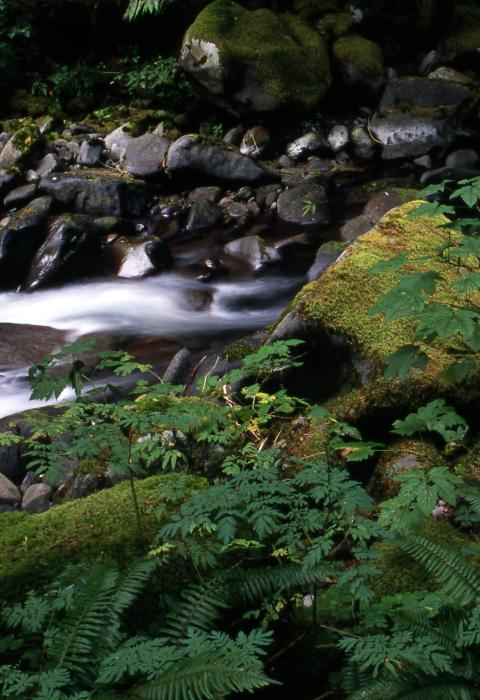Eagle Creek (Mt. Hood National Forest)
Oregon
Eagle Creek is a tributary of the Clackamas River on the western slopes of the Cascade Range in northwest Oregon. It flows to the west and joins the Clackamas River north of the town of Estacada, Oregon. The designated Eagle Creek corridor is entirely within the Salmon-Huckleberry Wilderness in the Mount Hood National Forest. The creek begins in a cirque-shaped headwater area, then flowing through a steeply sloped V-shaped valley that is heavily forested with older aged Douglas-fir and hemlock. The creek contains some riffles, with numerous downed logs and pools. The presence of large, old trees and the lack of human alterations along the segment add to the visual quality of the river.
This multi-story undisturbed forest provides prime quality habitat for the northern spotted owl, which are known to nest in the area. There is also high-quality riparian habitat along the creek edge that meets many needs of big and small game species in the area. The lower end of the corridor provides key winter range for big game species. The stream corridor is notable as one of a very few places where high water quality, high habitat diversity, and high stream productivity coexist, making for excellent fish habitat.
Designated Reach
March 30, 2009. From its headwaters to the Mt. Hood National Forest boundary.
Outstandingly Remarkable Values
Botany
Coldwater corydalis, a Forest Service sensitive species that is critically imperiled in Oregon, may be present in the river corridor and is a river-related/river-dependent species. Eagle Creek includes undisturbed late-successional/old-growth riparian forest, where coldwater corydalis habitat is present.
Recreation
Because Eagle Creek is entirely within the Salmon-Huckleberry Wilderness, activities are limited to wilderness-compliant uses, such as hiking, horseback riding, dispersed camping, nature viewing, photography, paddling, and trout fishing. There are some hiking trails in the river corridor, but most are used in the snow-free season. The level of use in the area is light to moderate. Access to the area is limited because of the wilderness designation and limited trailhead facilities.
Since this area experiences less visitation than other parts of the forest, there is a high-quality experience for those seeking solitude. There is likely little to no crowding or conflict issues for visitors; however, equestrian use is becoming increasingly more popular in the area. Local equestrian groups have a special interest in the area due to the easy trail grade and ease of use for horses. Equestrian trail use along the river is a unique characteristic for the area because of old-growth stands and the opportunities for solitude. Since equestrian trails of this caliber are limited within the region of comparison, people are willing to travel long distances to experience it.

